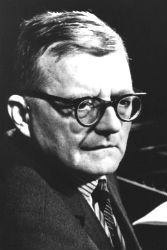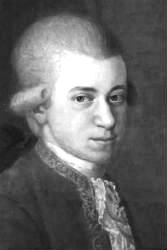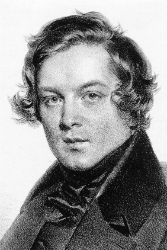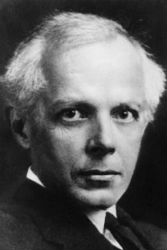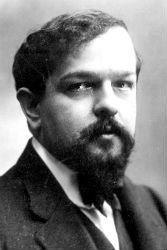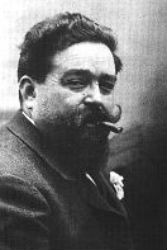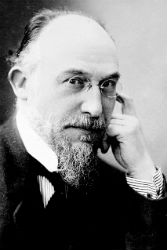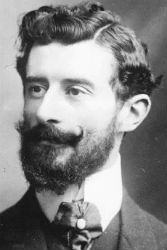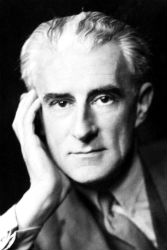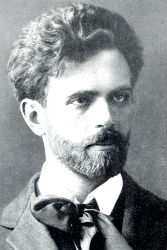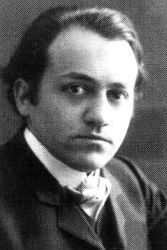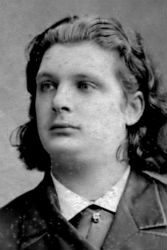BEETHOVEN
Violin Sonata No. 10, Op. 96 | String Quartet No. 13 in B-flat major, Op. 130
MICHAEL STEINBERG ON BEETHOVEN’S STRING QUARTET NO. 13 IN B-FLAT MAJOR, OP. 130
From The Beethoven Quartet Companion, ed. Robert Winter and Robert Martin (University of California Press, 1994) pp. 227-244
Opus 130, begun in August 1825 and completed in its original form in November of that year, is the third in order of composition of the three quartets that Beethoven composed for Prince Nicholas Galitzin. What can Ignaz Schuppanzigh and the colleagues with whom he gave the first performance have thought when they received the music? What, for that matter, must Galitzin’s reaction have been? Whatever their individual peculiarities of detail, the E-flat quartet and the A-minor would have looked familiar from the point of view of overall design, even with the ‘extra’ march movement in the latter piece. But the B-flat? Here is a first movement of, generally, the sort and scale one would expect. But then the quartet seems to go off into the world of divertimentos or suites, for what follows is an altogether strange miscellany of movements. And, to conclude, a fugue of outsize dimensions and outlandish difficulty.

Wassily Kandinsky, Strings, 1924

Wassily Kandinsky, Flat, 1929
In this quartet Beethoven continues the formal adventures of his last two piano sonatas, Opp. 110 and 111, written in 1821-22. In Op. 110, after a sonata-form first movement and a scherzo, he gives us an operatic slow movement (the aria preceded, quite properly, by a recitative) and a fugal finale. Well and good, except that he follows that with a second version of the aria and finale, so that he ends up with a six-movement work whose fifth and sixth movements are variations on the third and fourth. Then in Op. 111, as though to compensate for that extravagance, he offers a two-movement design, a sonata movement followed by a hugely expansive set of variations. It is a perfect example of his use of contemplative and broad variations as contrast to a terse and driving sonata form. The six-movement Op. 130 is inspired eccentricity in excelsis.
I. Adagio, ma non troppo – Allegro (B-flat major)
The first movement seems at first to conform to the familiar pattern of a slow introduction leading to a movement in a quicker tempo. Still, the beginning itself, calm though it is, is strange. It is common enough for slow introductions to begin unharmonized, in unisons or octaves, though this is a less frequent practice with Beethoven than with Haydn. Here Beethoven does begin that way, modestly (just two octaves deep), with a four-note chromatic descent from B flat, the keynote, through A and A flat down to G. The B flat and A are fairly long, the A flat and the G move more swiftly. This implied division of the four into 2 + 2 will be of some consequence later on. The G is not, however, the end of the phrase, for the flow continues unbroken into a half cadence, the second half being fully harmonized. Now it is also common enough for slow introductions to begin with full harmony, but the switch in mid-phrase from austere octaves to rich chords is surprising and also some-how very touching.

Wassily Kandinsky, Festes III, 1925 (detail)

Wassily Kandinsky, Festes III, 1925 (detail)
Then, demurely, Beethoven answers the first phrase with another—fully harmonized from the beginning—that rounds off the sentence with a full cadence on the tonic. The second phrase begins with the same four melody notes—B flat, A, A flat, G—as the first. With some rhythmic foreshortening and a surprising offbeat accent, Beethoven moves forward to another half cadence, and here, taking the F that is the basis of the last chord as its point of departure, the cello begins a new thought. This has something of an ‘antique’ flavor, though the phrasing and dynamics are distinctly 1820s modern. One by one the other instruments join in, all remembering something of the four-note chromatic motion with which the music began, and move into another half cadence. Two things distinguish the second section of this Adagio from the first—the more contrapuntal texture and the darkening of the harmony as G flats begin to appear here and there. The music has begun to draw some conclusions from the chromaticism of the first four notes.
Suddenly the first violin bursts out in a flurry of sixteenth notes. The Allegro has begun. Under the first violin’s runs, the second violin plays a fanfare in which there is a curious contradiction: the upbeat is loud but the downbeat to which it leads is soft. Beethoven always likes to unsettle our expected ideas about rhythm and accent. All the instruments take up the running sixteenths, but when the Allegro has gone no more than five measures the Adagio interrupts it again. This too lasts five measures, just enough for a rich variant of the opening pair of cadences. The Allegro, with its combination of fanfares and running sixteenths, resumes as though nothing had happened. The next new idea is not in fact new but a revival of a segment in the Allegro tempo.

Wassily Kandinsky, Grey-Grey-Brown No. 138, 1924

Wassily Kandinsky, Untitled, 1922
Emphatically, the music goes to F, the dominant. There, not surprisingly, the unexpected occurs. In Beethoven, as in Haydn, you must always expect the unexpected. The landing on F produces, not a new theme in the dominant, but a chromatic scale for all four instruments—twice four notes plus one, F, G flat, G, A flat; A, B flat, C flat, C; and then D flat. The first eight notes are staccato, the D flat is long. With the first eight notes goes a diminuendo from forte to piano. This D flat turns out to be the dominant of where Beethoven really means to go. The cello, sotto voce, describes a graceful descent to G flat, and there Beethoven offers a new theme. Its outer reaches are defined by pairs of semitones so that the idea of four semitones is still present but in a different form. This comes with a pendant of groups of staccato sixteenth notes, and these very naturally lead to a variant—now pianissimo and legato as against the previous forte and ‘non ligato’—of the running sixteenths. The music builds up to a proud new version of the fanfare in ringing fortissimo (the first one in the piece), and there the exposition comes to a close.
Quiet eighth notes lead to a broad cadence on B flat, A. Those were the notes with which the movement began, and they take us now into the repeat of the exposition. When the exposition has been played for the second time, the quiet eighths go instead to a similar cadence on G flat, F, and there the development begins. Most strangely. Just as the B flat, A of the first ending lead to a return of the opening Adagio B flat, A, so does the G flat, F of the second ending lead to a return of the opening music but beginning—in the cello—on G flat, F. This gets as far as the first half cadence and there it stops, uncertainly. The two violins, pianissimo, suggest taking up the Allegro, one playing the fanfare, the other the running sixteenths. This, too, peters out almost at once. The three lower instruments resume the Adagio, this time carrying it to a full cadence, but in D major, which is far indeed from the half cadence on G flat four measures earlier. The violins, willing, agree to that key and take up the Allegro there. The Adagio returns once more, and in two measures, whose gestures bring recitative to mind—they also bring the first instruction to play espressivo—the instruments seem to signal pleasure at the violins’ agreement to the idea of D major. Now, with a return to Allegro, the development at last gets under way.

Wassily Kandinsky, Calmed, 1931

Wassily Kandinsky, Sign with Accompaniment, 1927
After so much preparation it is strangely brief. Its topics are the fanfare and a fragment of the graceful line with which the cello made the transition into G-flat major in the exposition. New are a sighing accompaniment of pairs of slurred notes (many of them semitones) and a rapturous phrase given three times to the cello and twice to the first violin. The latter is a heightened version of an earlier phrase. As the violin is playing this phrase for the second time, the other instruments suddenly cut in with the vigorous running sixteenths. The first violin catches the cue and hastily switches to the fanfare. We are in the recapitulation. This of course brings plenty of rich variation of detail, but its general plan is straightforward enough. There is an amusing impudence to the way the transition to the second theme is handled, and, in a nice touch of telling surprise, the segment itself appears first in D flat and only then in the home key of B flat.
The transition from recapitulation to coda is broader than the corresponding bridge from exposition to development. The difference is slight, just one measure, but it is a sign of Beethoven’s exquisite sense of rhythm and overall energy: enough has happened since the beginning of the development, enough new energy has been built up, for him to feel the need for that extra measure for the ‘grounding’ process before the coda makes final confirmation of the tonic. Once more we hear the first four measures of the Adagio, though this time they go to a deceptive cadence on G minor. Again there is uncertainty—both playful and genuinely hesitant—between Adagio and Allegro. Then, confidently, easily, quietly until the last couple of beats, the music moves toward the final cadence, which is as simple and as unrhetorical as possible. This first movement is expansive; at the same time it strikes us as extremely taut, being densely saturated by a very few ideas. In a way that is characteristic for his late style, Beethoven confronts us constantly with extremes—unisons and densely polyphonic textures, the odd and the straight, the propulsive and the hesitant.

Wassily Kandinsky, Top and Left, 1925

Wassily Kandinsky, Composition 8, 1923
II. Presto (B-flat minor)
After this rich essay in sonata style, Beethoven gives us four shorter character pieces. The first of these is like one of his late bagatelles for piano—drastically brief, a rushing presto, most of which, except for a stomping interlude for the first violin, passes in a mad whisper. The key is B-flat minor, but the stomping trio of this mini-scherzo is in B-flat major. The semitone idea is not forgotten: the first violin’s first breathless word moves from F to G flat while the second violin begins its accompaniment by descending from D-flat to C.
Beethoven fits an incredible amount of delightful detail into these not quite two minutes. Throughout the trio, we do not know—and are meant not to know—which are the upbeats and which the down. The skidding scales that form the transition back to the beginning come near to slapstick. The reprise itself is deliciously varied in texture and details of scoring. There is a tiny, almost whimsical coda; then, unceremoniously, Beethoven kicks this little piece off the stage.

Wassily Kandinsky, Accompanied Contrast, 1935

Wassily Kandinsky, Decisive Pink, 1932
III. Andante con moto, ma non troppo. Poco scherzoso (D-flat major)
The next movement, in a tempo neither slow nor fast, moves with a luxurious sense of time limitlessly available. The heading of Andante con moto ma non troppo is one of those bet-hedging instructions of which Beethoven was fond, and he backs it up with a character direction, poco scherzoso: moving along, but not too much, and just a little bit jocular. The first violin begins alone on B flat, the keynote of the two previous movements, but what the second violin and viola slip under that note—E flat and C—signals that this time B flat is not the key. Sighing, the first violin drops a semitone from B flat to B double-flat. (Next, it will go down one more chromatic step to A flat.) The second violin and viola are no less melancholy, though their sighs carry them upward. It is a witty inversion of the way the second movement began, with rising first violin and falling accompaniment. The score reader who has seen the word scherzoso knows that something is up; the innocent listener could well take this pathos at face value, as Beethoven probably hoped he or she would. In any case, in the third measure the viola begins an insouciant tune to which the cello supplies a jaunty accompaniment, and with that the climate changes. It is also clear that the key is D-flat major, the relative major of the second movement’s B-flat minor.
It is a marvel of gentle humor, this movement: poco scherzoso is exactly right, and in its moments of tenderness Beethoven pleads for cantabile and dolce. It is exceptionally rich in texture as well. Its exquisite, beautifully ‘heard’ sounds—heard by a composer who in the literal, physical sense had heard nothing for ten years—are a feature that is exceptionally lovely and almost unbearably moving. One’s first and, if you like, naive reaction to the idea of a deaf composer is to marvel that he can do it at all. The more experienced and knowledgeable person knows that the essential part of composing happens in the imagination, in the inner ear, as it were, and that many composers write at their desks, not their pianos; in that knowledge you can almost underestimate the frustration, the agony, of deafness. But then you are confronted with the near-incomprehensible miracle of the deaf Beethoven. Not only did his musical thought become steadily, incredibly richer with the years, so did his fantasy for the physical details of sound. Not only did he compose more beautiful music for the string quartet and the piano the older he got; the more beautifully, imaginatively, and effectively he composed string quartet and piano music. The end, with its sudden rush of energy, is more than poco scherzoso.

Wassily Kandinsky, Flighty, 1931

Wassily Kandinsky, Haze, 1929
IV. Alla danza tedesca. Allegro assai (G major)
Now comes another drastic change of scene. The key, G major, is at the furthest possible remove from the D-flat major of the previous movement. To an ear attuned to classical harmony, that first G-major chord—D natural on top as the melody note—sounds as though your CD player had skipped to the wrong band. Alla danza tedesca—in the manner of a German dance—is the sort of piece Mozart called a ‘teutsche.’ It is quick, very quick—Allegro assai. It is also amiable, up to a point; at the same time it is not quite uncrazy either, a kind of proto-Mahler. In humorous emulation of a wheezing hurdy-gurdy, but also to keep us on our toes, to make sure we do not get lulled into thinking that just because it is a string quartet it has to be all housebroken and dressed up and nice, Beethoven constantly breaks the flow with hairpins, rapid crescendo/decrescendo sequences. Especially when this dance goes fast enough—and quartets often play it too slowly for an Allegro assai in 3/8—these hairpins can produce something close to seasickness, the kind you induce with delicious deliberateness on a merry-go-round at the fair.
The movement covers a lot of harmonic territory, and I would guess that a model, a very much larger one, that Beethoven might have had in mind, both for harmonic motion and for unbuttoned rustic good humor, was that astounding drinking chorus at the end of ‘Autumn’ in Haydn’s The Seasons. Toward the end, Beethoven plays with the broken-work textures that so amused him in the scherzo of the F-major Quartet, Op. 59 no. 1. Here he is even bolder, because not only does he parcel out the tune at the rate of one measure per instrument, he delivers the measures in the wrong order.

Wassily Kandinsky, Heavy between Light, 1924

Wassily Kandinksy, Grey-Blue, 1925
V. Cavatina. Adagio molto espressivo (E-flat major)
From this dance emerges one of Beethoven’s most inward and wonderful slow movements. He calls it a cavatina, an operatic aria. Writers often comment on its simplicity. It is indeed simple in design, in its brevity (it takes about half as long as the slow movements of Opp. 127 and 132), and, not least, in its direct emotional force. On the other hand, it is extraordinarily complex in texture; neither is there anything obvious about the melody. The first violin is the principal singer, and at no point, were the song to break off, could we foretell its continuation, for all that whatever does come always sounds like the inevitable way. What the other instruments play is active and organic, always closely related to the song itself. Never before was an ‘accompaniment’ so little inclined to be ‘accompanimental.’ Not until Brahms do you again encounter the like (and the way Brahms writes a song for solo oboe and wind ensemble at the beginning of the slow movement of his Violin Concerto is remarkably like).
The three lower instruments begin. None is neutral: the cello line has a striking profile, the viola has a strong melody in the middle of the texture, and the second violin part is something we could easily take for a theme in its own right. The two violin lines serve as an example of how tight and organic the relationships among the parts are. The top and therefore most prominent line in the accompaniment, that of the second violin, begins by going from G to B flat and continues to dwell on what is in effect a long, embellished B flat. When the first violin begins the principal melody, it reverses that procedure by beginning with a powerful leap from B flat to G, then staying on what is similarly a long and embellished G.

Wassily Kandinsky, Bright Unity, 1925

Wassily Kandinsky, Black Points, 1937
I described the cavatina as ‘emerging’ from the German dance. The harmonic connections—or jolting nonconnections—from movement to movement are exceptionally beautifully judged in this quartet. Recall, at one extreme, the way Beethoven softens the transition from the second movement to the third by beginning the latter with an unaccompanied B flat, the keynote of the former. At the other pole he does everything he can to make the entrance of the less than perfectly housebroken German dance as shocking as possible from the outside.
At this point he wants to be softly conciliatory again. The German dance has ended on an eccentrically scored G-major chord, three of whose four notes are Gs. (The fourth note is a B, but the normal thing would be for one note to be a D so as to complete the G-major triad.) The cavatina begins on an equally eccentrically scored E-flat chord, two of whose three notes are also Gs. (The normal thing would be to have a B flat to complete the triad and, if any note is to be doubled, for that to be the keynote, E flat.) From G major to E-flat major is a fair distance, but with this extra and unusual emphasis on G, Beethoven emphasizes the common ground of the two keys. G obviously matters. We may remember that it was important at the very beginning of the quartet, being the last note of the unison descent by semitones in the first measure and also the note that gets the prime emphasis in the next new idea. And we are far from having heard the last of it.

Wassily Kandinsky, Reciprocal, 1935

Wassily Kandinsky, In the Black Square, 1923
The first violin sings its cavatina, and each time it pauses for breath, the other instruments, led by the second violin, jump in to continue the melodic flow. It is a long, thirty-nine-measure paragraph of inspired melody whose vocal gestures cry out for an opera-loving violinist. Beethoven heads the movement sotto voce, and the song, intensely expressive though it is, stays within piano almost the entire time.
Suddenly the level drops down to the completely different world of pianissimo. The three lower instruments play agitated triplets, all on E flat. Then the cello shifts to D flat and thus moves the harmony away by a great distance. Over these triplets—sempre pianissimo, Beethoven warns—the first violin begins a music, stammering and hesitant, that is unlike anything else he ever composed. We know from the recitative and aria in the Piano Sonata, Op. 110, from the recitative for cellos and basses in the finale of the Ninth Symphony, not to forget the song we have just heard, how close Beethoven could take instruments to human utterance. This, however, goes beyond. To guide the violinist, Beethoven writes beklemmt. The word carries meanings and associations in the range of oppressed, weighed upon, suffocated, straitened, anxious. You can be beklemmt by the air just before a thunderstorm, by a nightmare, by an agonizing wait. It helps to have a sense of the word, but what you really have to understand is Beethoven. This episode lasts scarcely more than half a dozen measures, but it is a look into the abyss.

Wassily Kandinsky, Moderately, 1925

Wassily Kandinsky, On White II, 1923
As though drawing back quickly from the edge, the music returns to the cavatina. Beethoven powerfully telescopes this transition. The first violin part of the beklemmt speech ends on B flat, and if we had it before us by itself we would expect it to be harmonized with a half cadence on a chord of B flat. In other words, we would now be on the dominant, poised to return to E-flat major and a reprise of the cavatina melody. In actuality, though, Beethoven arranges the harmony so that, by the time the violin reaches its B flat, the other instruments have already arrived on an E-flat chord. We are not expectant, we are there. To arrive at an expected harmonic destination but to arrive at it unexpectedly soon is a device Beethoven used ingeniously and with dramatic power all his life.
The reprise of the cavatina is compressed from thirty-nine measures to eighteen, to which the first violin adds a one-measure gesture of elegiac farewell. In Thayer’s Beethoven biography we read that Karl Holz, the young second violinist in Schuppanzigh’s Quartet, a good friend to Beethoven in his last years, and a truthful witness, recalled that the cavatina ‘cost the composer tears in the writing and brought out the confession that nothing that he had written had so moved him; in fact, that merely to revive it afterwards in his thoughts and feelings brought forth renewed tributes of tears.’

Wassily Kandinskiy, Certainly, 1929

Wassily Kandinsky, Pointed and Round, 1925
The last chord of the accompaniment is special. Beethoven writes four eighth notes—crescendo from piano and diminuendo to pianissimo—but ties them together. The result, neither a single, sustained chord nor four distinct chords, is a poignant throb. (Beethoven confounds pianists by giving them long sequences of single notes tied in this fashion in the Sonata, Op. 110—a piece, as I have noted, of great vocal ambition.)
VI. Große Fuge (Grande Fugue Op.133)
The cavatina has floated to silence on an E-flat major chord whose top note is G. This G is now picked up in a grand unison and the work is capped by an uncompromisingly difficult fugue finale that accounts for a little over one-third of the length of the entire quartet. It was on 21 March 1826 that the Schuppanzigh Quartet gave the first performance. Beethoven had learned about fugues when he played The Well-Tempered Clavier as a boy in Bonn. Was he aware it was Bach’s birthday? Surely not—neither he nor anyone else at that gathering.

Wassily Kandinskiy, Serious Fun, 1930

Wassily Kandinsky, From-To, 1935
Beethoven himself did not attend the first performance but waited in a nearby tavern for reports. That the audience demanded encores of the second and fourth movements, the ‘bagatelle’ and the German dance, did not impress him. Why not the fugue, he wanted to know. ‘Cattle!’ he roared. ‘Asses!’
Some listeners had been exalted and excited by the fugue; rather more were bewildered. The players had great difficulties with it. Professionals pronounced it incomprehensible. Beethoven had never been easily pushed around by publishers, performers, and friends, but this time he was persuaded to take the fugue out of the quartet and to write a new finale in his most noncontroversial vein. We will come to that later.

Wassily Kiandinsky, Shallow-Deep, 1930

Wassily Kandinsky, Violet-Orange, 1935
Beethoven of course never doubted the intrinsic quality of his fugue, only its function in the context. It was much discussed in Viennese musical circles, and in May 1827, two months after Beethoven’s death, Mathias Artaria published it by itself, both in its original form, as Op. 133, and, as Op. 134, in a piano duet arrangement by the composer himself. The duet version is all but impossibly difficult, but it is also marvelously illuminating in the ways it sorts out strands of polyphony and the dynamics. Opuses 133 and 734 were both dedicated to Beethoven’s friend, patron, and pupil, the Imperial Archduke Rudolph, recipient of a long and impressive list of Beethoven dedications including the ‘Emperor’ Concerto, the ‘Archduke’ Trio, the Farewell, Hammerklavier, and Op. 111 piano sonatas, and the Missa solemnis. The fugue seems not to have had another public performance until 1853, when the Maurin Quartet played it in Paris, and it was not until the 1920s that quartets again began to play Op. 130 with its original finale. Current taste is decisively in favor of the fugue finale.
The title page of Opp. 133 and 134 described the piece as ‘Grande fugue, tantôt libre, tantôt recherchée’—in part free, in part studied or worked. (Stravinsky liked to call it ‘die sehr grosse Fuge.’) The beginning, which Beethoven titles Overtura, is as libre as can be. In its thirty measures it changes tempo twice and character more often than that. In music of extreme disjunction, its gestures separated by unmeasured pauses, Beethoven hurls scraps of material about. Pairs of semitones are prominent. Beethoven gives us the figure marked ‘A’ in four versions—powerfully declamatory, wild, lyrical, and in almost tentative pianissimo. From here on it is the task of the composition to demonstrate the coherence of what is presented in so aggressively and violently dissociated a manner.

Wassily Kandinsky, Untitled, 1940

Wassily Kandinsky, Three Sounds, 1926
After five beginnings, each a little less assertive than its predecessor and each broken off in mid-flight, the fugue proper, the recherchée part of the composition, gets under way. It is a double fugue, with the theme of the Overtura played by the viola while the first violin adds a leaping figure of ungainly and totally captivating energy. The viola has tied eighth notes, similar to those in the final cadence of the cavatina. The second violin joins in with the leaping theme, followed by the cello with the one with the semitones. These ideas are explored over 128 measures as though in a series of variations of growing rhythmic and textural complexity, unrelieved in ferocious vigor, limitlessly bold in harmony. The semitone theme retains its identity, which is not surprising, given the role of semitones throughout this quartet, its predecessor, Op. 132, and the following one, Op. 131. At the same time, the rhythm of the music that surrounds the semitone theme becomes ever more energetic.
The tempo slows—Meno mosso e moderato is Beethoven’s instruction—and a more conjunct and lyrical idea in sixteenth notes, first proposed in the Overtura by the viola, is now explored. It is also in a softer key, and this surprise appearance of G-flat major is a reference back to the comparable key change in the first movement. The main fugue theme is still present but tamed. Essentially this is an interlude, more libre than recherchée, and all but ten of its seventy-four measures are pianissimo.

Wassily Kandinsky, Violet-Green, 1926

Wassily Kandinsky, Violet, 1923
Motion almost comes to a halt on a slow, measured trill, which during its course changes from minor to major—and characteristically, not on a beat where we expect a change. From this there leaps forth a new movement in a new meter, 6/8, and at a new tempo, Allegro molto e con brio, faster than any we have heard in the Grosse Fuge so far. The disjunction,, the violence of the leaps, also surpass anything we have heard up to now. The main subject is the jagged theme with the semitones, but to this Beethoven also adds a new, simple, and almost jaunty transformation of the semitone idea. In another segment, on the other hand, we have an example of the opposite extreme. The semitone is pried open to stretch into a minor ninth, and at both beginning and end the metrical dislocation is extreme. There are many interruptions as well as reappearances of earlier passages. These are at times so startling that you could almost think you were dealing with a copyist’s error or a badly spliced tape. The interference of the libre with the recherchée is fierce and outrageous.
Without preparation the slower music returns, but in a new key, A-flat major. It is completely transformed in character. So reticent before, it is loud (just to make sure, Beethoven marks forte on every single beat), assertive, with the jagged semitone theme appearing simultaneously right-side up (first violin) as well as upside down (viola), and with a new, churning accompaniment in the cello.

Wassily Kandinsky, Throughgoing Line, 1923

Wassily Kandinsky, Untitled, 1922
This breaks off suddenly, on an expectant chord, a tonic six-four. The normal sequence of events after such a chord is to go to the dominant and then to a firm, root-position tonic. Beethoven gives us the dominant but in an eccentric form, oddly placed as to meter, and with a trill on the bass note. Then a long silence. Then, instead of the expected tonic, another chord, also with a trill in the bass, moving the harmony into quite a different direction, possibly toward the relative minor, F minor. Then more alternations of silence with strangely restless chords (all with trills in the bass). The while, the dynamics go down from forte to pianissimo, and the tempo accelerates steadily. It looks clear on the page, but the combination of the rhythmic placement of the chords and of the speeding up is a canny way of creating the effect of something improvised and totally puzzling to the listener. These changes of course and those that follow all look back to the similar disruptions in the first movement.
In fact, though, this series of unpredictable chords returns us to the home key, B-flat major; thus, in delightful paradox, the purpose of this extremely puzzling passage was something very purposeful indeed. We are also back in the 6/8 Allegro molto e con brio. The crazed anger that possessed this music before is now diffused. It moves now with easy, good-humored grace, even taking the time to slow down for a rapt contemplation of the theme in very long notes and of course in the most hushed pianissimo.

Wassily Kandinsky, Angular, 1931

Wassily Kandinsky, Warmed Cool, 1924
But Beethoven is not yet done with shocks. The music loses momentum, then stops, uncertainly, on a dissonance. Silence. The two violins offer to start the fugue over from the beginning. This is a bad idea. Silence again. Then what about the gentler Meno mosso e moderato? Also not the right thing. The four instruments then unite in strong octaves like those at the beginning of the Overtura, and from there, Beethoven moves swiftly to the end. The resolution of these extraordinary, unprecedented conflicts that the Grosse Fuge has posed is surprising and touching—a mixture of the exalted and the humorous that only Beethoven could have invented.
In September 1826, six months after the first performance, Beethoven sketched a new finale, which he then composed in October and November. It turns Op. 130 into a completely different piece. In the original version everything leads up to the fugue, while in the revised edition, the much lighter finale places the center of gravity on the cavatina. Not surprisingly, Beethoven retains the idea of using the cavatina’s closing G as the point of departure for the finale; this time, however, it is a charming vamp-till-ready that gets the movement going on a piquant, rather Haydnesque harmonic slant. (Schubert liked the effect and emulated it, not without some of Beethoven’s sense of drama, in his last piano sonata.) Beethoven also makes casual reference to the theme of the exiled Grosse Fuge, readily recognizable even though he has shuffled the intervals around. This movement was the last piece Beethoven completed, and it is music of consummate grace, robust humor, warmth, and, in all its modesty, fullness of invention.

Wassily Kandinsky, Concentric, 1924
VIDEO: BEETHOVEN, VIOLIN SONATA 10 & STRING QUARTET 13
Violin Sonata 10 | Gidon Kremer & Martha Argerich
String Quartet 13 | Alban Berg Quartet
Violin Sonata 10 | Anne-Sophie Mutter & Lambert Orkis
BEETHOVEN: THREE BOOKS
SPOTIFY: BEETHOVEN, VIOLIN SONATA 10 & STRING QUARTET 13

Beethoven: Violin Sonatas | Mutter & Orkis

Beethoven: String Quartets | Quartetto Italiano

Beethoven: Violin Sonatas | Faust & Melnikov
YOU CAN LISTEN TO THE ALBUMS IN FULL WITH A REGISTERED SPOTIFY ACCOUNT, WHICH COMES FOR FREE
BEETHOVEN: VIOLIN SONATA 10 & STRING QUARTET 13 IN ‘MARA, MARIETTA’
FROM ‘MARA, MARIETTA’
Part Five Chapter 1
My God, why did I wear white? Your father at the wheel, his new wife beside him and you on the back seat, you make your way home from the Lucerne Festival where, from the turn of the opening trill to the wit of the adagio-presto coda, your performance of Beethoven’s tenth violin sonata had been a triumph: A happiness that would soon belong to another lifetime. Between your legs the stain spreads, dissolving your dream of ambivalence. So red is the colour of reality, so red marks my limits. God, what a cataclysm! Thus you came to understand that the exterminating angel is female; yes, that even for you, the other sex is feminine.

George de Forest Brush, The Young Violinist, 1916

Théodore Gérard, A Girl Knitting, 1874
FROM ‘MARA, MARIETTA’
Part Ten Chapter 15
Turning towards you I take your hand and hold it in mine on the armrest. At the sight of your feet in their domino-square socks, resting on the footrest –
Wrap a baby in plastic,
Keep him at one remove from the world.
Never look into his eyes,
Never touch him.
Give him nothing
But a wall to bang his head against.
Then see if he doesn’t drown
In the least tenderness.
– I am touched: In your living room overlooking the southern edge of Hampstead Heath, I sat opposite you as you knitted them. We were listening to the second of Beethoven’s late quartets, and I vividly remember, when the cavatina emerged from the danza tedesca, looking at you and saying to myself, ‘I have no right to this happiness’. I was not wrong.




